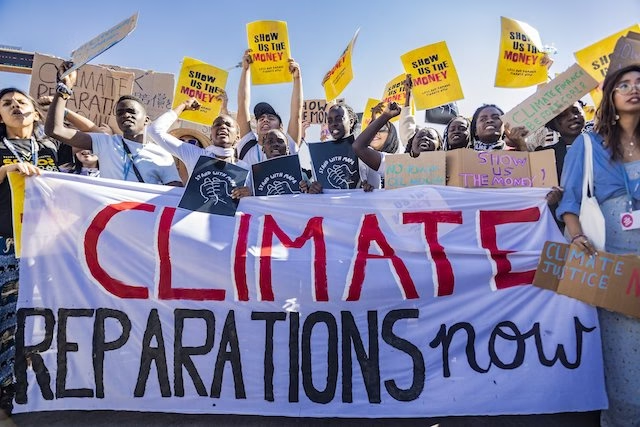Ten years after the Paris Climate Agreement was adopted with the goal of limiting temperature increase to 1.5°C, “progress is alarmingly inadequate, exposing communities, economies and ecosystems to unacceptable risks,” a new report finds. But that’s no reason to abandon the goal: “Achieving these targets is not only still technically feasible but also more important than ever.”
“The State of Climate Action 2025,” is the fifth such report, issued in advance of the next climate summit, COP30 in Belém, Brazil, Nov. 10 to 21. A launch webinar on Oct. 28 featured two primary authors plus a panel of international climate leaders.
“While progress is heading in the right direction for most of the 45 indicators assessed, none are on track to achieve 2030 targets compatible with this temperature goal,” the report states. “The pace of change is promising, albeit still too slow, for 6 indicators and at well below the required speed for another 29.” Five more are heading in the wrong direction entirely, and there’s insufficient data to evaluate another five.
Electric passenger car sales had been on track to meet 2030 goals in last year’s report but sales fell slightly in Europe due to rollbacks of subsidies, and it slowed in America “due to a combination of factors like a relatively slow buildout of public charging infrastructure and limited availability of affordable electric sports utility vehicles, which account for three-quarters of the country’s passenger car sales.”As a result it was downgraded to to the category of “off-track.” Also in that category was private climate finance, but it had been upgraded from “seriously off-track,” increasing from roughly $870 billion in 2022 to $1.3 trillion in 2023.
By far the largest category is “seriously off-track,” meaning they will require “at least a twofold — and for most, more than a fourfold — acceleration” this decade to keep the 1.5°C limit within reach. Examples in need of greatest acceleration include:
- Phasing out coal needs to be more than 10 times faster.
- Scaling technological carbon dioxide removal also needs to be more than 10 times faster.
- Reducing deforestation needs to be nine times faster.
- Expanding public climate finance needs to be six times faster.
- Expanding rapid transit networks needs to be five times faster.
- Lowering consumption of beef, lamb and goat meat in high-consuming regions needs to be five times faster.
Also in this category are solar and wind electricity, even though solar power is the fastest growing source of electricity in history. Together, solar and wind in electricity have grown at an average rate of roughly 13% per year since 2020, but it needs to be 29% per year to meet 2030 goals.
At the same time, relatively new innovations, like green hydrogen, technological carbon dioxide removal and electric trucks saw significant one-year gains. Green hydrogen production more than quadrupled in one year. Commercial electric trucks sales (medium- and heavy-duty) rose by 67% between 2023 and 2024. Direct air capture projects are also taking off, but meeting 2030 goals will require all these new developments to accelerate more than 10 times faster.
While technological challenges are considerable in many categories, changes in finance are simply a matter of political will. While private climate finance has improved significantly, public finance hasn’t, while public financing for fossil fuel is still increasing — one of five indicators headed in the wrong direction. “Public finance continues to play a critical role in propping up fossil fuel industries,” the report notes.
At the same time, “Green industrialization is now what drives many economies,” said Dora Modise, executive director of the presidential climate commission in South Africa. But resources are lacking for many. “For many countries and certainly developing countries like South Africa, we are no longer facing a bottleneck around vision or policy. All of that is in place,” she said “We know what needs to be done. The main impediment is access to affordable and predictable capital that allows us to implement these transition plans.”



